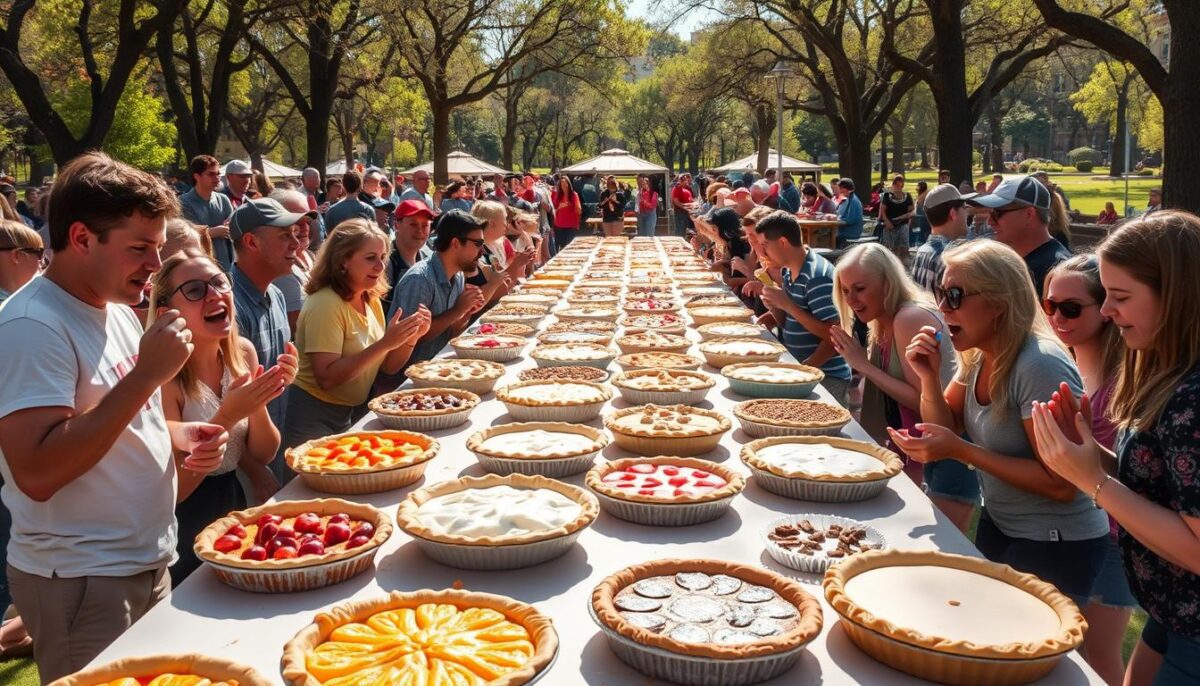Welcome to the exciting world of pie eating! If you’re curious about the rules for pie eating, you’ve come to the right place. This guide will walk you through essential tips and guidelines for pie lovers, including etiquette and strategies for competitive events like pie eating contests.
Whether you’re a seasoned pro or a beginner, understanding the rules for pie eating is key to enhancing your experience. So, get ready to dive in as we explore everything you need to know, from general pie etiquette to specific contest rules.
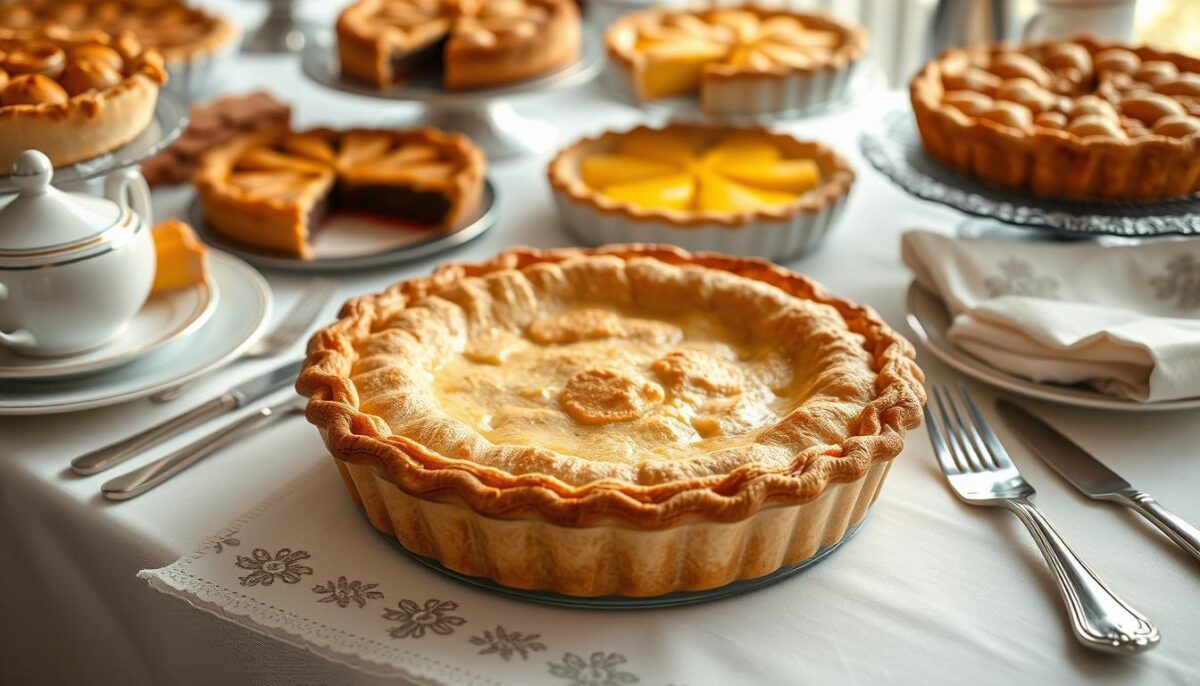
To enjoy this article fully, you should know the basics of pie eating. This includes the rules for pie eating? and competitive eating guidelines. We’ll go over everything, so you can enjoy your favorite treats with confidence.
1. The Art of Proper Pie Eating Etiquette
Enjoying a pie is more than just eating; it’s about savoring each bite with respect and care. Following the official rules for pie eating can make the experience truly special. Whether you’re competing in a contest or enjoying a homemade pie, knowing the etiquette adds to the joy. For inspiration on pies, check out our Cinnamon Roll Apple Pie—a creative twist on tradition.
Basic Table Manners for Pie Consumption
- Use a fork and knife to handle the pie gently.
- Choose the right utensils depending on the pie’s texture and type.
- Avoid making a mess by cutting and eating carefully.
Temperature and Timing Considerations
Serving pie at the right temperature enhances its flavors and textures. For example, a warm apple pie paired with cold vanilla ice cream offers a perfect blend of contrasts. If you’re interested in gluten-free pie options, explore our Gluten-Free Apple Pie for a delicious alternative.
Choosing the Right Utensils
Using appropriate utensils can elevate your pie-eating experience. A sharp fork can pierce the crust without crumbling it, while a blunt knife is ideal for cutting neat slices.
Making Every Bite Memorable
By following these simple guidelines, you can turn an ordinary meal into a memorable event. Whether it’s the choice of utensils or the serving temperature, every detail matters when enjoying a pie.
Remember, the little things—like knowing the Best Thickener for Pie—can transform your pie into a masterpiece. Pay attention to these details, and your next pie experience will be truly unforgettable!utensils to the serving temperature, they all contribute to a great experience. By paying attention to these details, you can fully appreciate the flavors and textures of your pie.
2. Understanding Different Types of Pie Eating Events
To win a pie eating competition, knowing the different events is key. Each has its own rules and requirements. Familiarize yourself with the rules and regulations to succeed.
Some popular pie eating events include:
- Pie eating festivals, which offer many pie flavors and sizes
- Competitive eating contests, where you eat as much pie as you can in a time limit
- Charity events, where pie eating helps raise money for a cause
It’s important to know the rules of each event. This includes the pie size, utensils allowed, and time limits. By understanding these, you can improve your chances of winning and have fun.
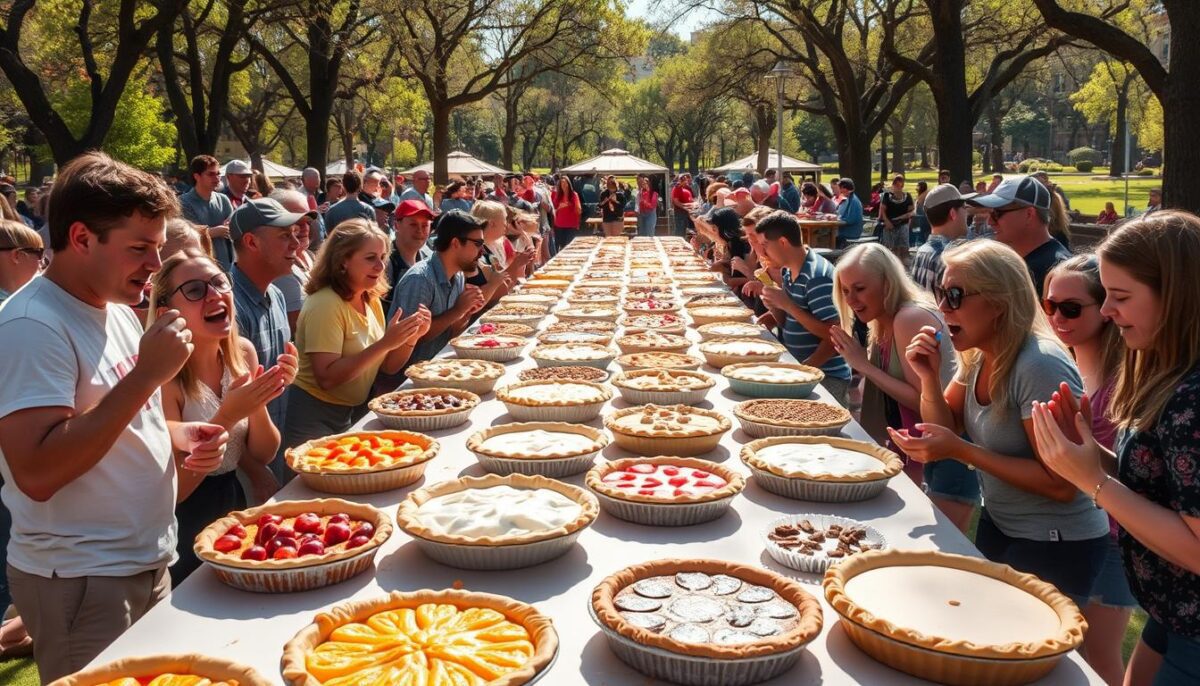
Whether you’re experienced or just want to have fun, knowing the event rules is crucial. By following the rules, you ensure a safe and enjoyable experience for everyone.
| Event Type | Rules and Regulations |
|---|---|
| Pie Eating Festival | No utensils allowed, eat as much pie as possible in 10 minutes |
| Competitive Eating Contest | Use of utensils allowed, eat as much pie as possible in 5 minutes |
| Charity Event | No utensils allowed, eat as much pie as possible in 15 minutes, donations encouraged |
3. What Are the Rules for Pie Eating? Official Competition Guidelines
To win a pie eating contest, knowing the rules is key. These guidelines cover time limits, allowed techniques, and when you can get disqualified. Learning these rules helps you plan better and boost your winning chances.
Competitive eaters must follow specific rules, which change with each contest. Usually, they have a set time to eat as much pie as they can. The rules say they must eat the pie in a certain way, using only their hands or a special utensil. Knowing these rules and how to adjust your eating style is crucial to succeed.
Standard Competition Time Limits
Time limits for contests range from 5 to 15 minutes. Contestants must eat as much pie as they can in this time. The rules also state the pie’s size and type.
Permitted Techniques and Methods
Competitive eaters use different methods to eat more pie. These include fast eating, pie dunking, and crust folding. By mastering these techniques and knowing the rules, contestants can outdo their rivals.
Disqualification Criteria
Contestants can get disqualified for breaking the rules. This includes not eating the pie the right way or acting unfairly. It’s important to know these rules to avoid penalties and ensure a fair contest.
4. Essential Equipment and Preparation for Pie Eating Contests
To do well in a pie eating contest, you need the right gear and prep. This means professional pie eating equipment like special utensils, plates, and clothes. It’s also key to know the pie eating competition guidelines for a fun and smooth contest.
When getting ready for a pie eating contest, think about these things:
- Sturdy plates and utensils that can handle the contest’s demands
- Comfortable clothes that let you move freely
- Learning the tips for pie eating contest to up your game
Also, training and practice are crucial to boost your stamina and skill. Try out different eating methods, like the “chipmunk method” or “dunking method.” Work on strengthening your jaw and throat too.
By following these tips and guidelines, you’re on your way to becoming a top pie eater. Always stick to the pie eating competition guidelines and put your safety first.
A well-prepared pie eater is a happy pie eater. With the right equipment and training, you’ll enjoy competitive eating safely and comfortably.
5. Professional Techniques for Competitive Pie Consumption
To excel in pie eating contests, mastering key strategies is essential. Professional eaters rely on specific techniques to consume pie quickly and efficiently. These include breathing techniques, body positioning, and strategies to enhance speed.
Some of the most important techniques include proper breathing to maximize oxygen intake, optimal body positioning to reduce strain on the jaw and throat, and speed-focused methods to consume the pie faster. Applying these strategies can significantly improve your pie-eating performance.
Equally important is understanding the rules for pie eating contests. Familiarizing yourself with the official rules not only helps you avoid disqualification but also ensures you can focus entirely on your eating technique. Without this knowledge, you risk making mistakes that could cost you the competition.
Key Techniques for Success
- Proper breathing and relaxation techniques
- Optimal body positioning for efficient eating
- Speed enhancement strategies to quickly consume the pie
Additionally, knowing the rules for pie eating contests gives you a competitive edge. With consistent practice, a strong grasp of the rules, and mastery of these techniques, anyone can improve their skills and increase their chances of success. Plus, you’ll have a lot more fun while competing!
6. Safety Guidelines and Health Considerations
Competitive eating can be exciting, but safety is key. Always get a medical check before a pie eating contest. This ensures you’re healthy enough to compete.
It’s also important to have emergency plans ready. This includes having a first aid kit and knowing how to call for help fast. Following these safety steps helps keep competitors safe and healthy.
Pre-Competition Medical Checks
Medical checks before a competition are crucial. They might include:
- Review of medical history
- Physical examination
- Screening for underlying health conditions
These checks help spot any health risks early. This way, competitors can take steps to stay safe and healthy.
Emergency Protocols
Having a plan for emergencies is vital. This might include:
- Having a first aid kit on site
- Designating a meeting point for emergency services
- Establishing a communication plan for emergency responders
By focusing on safety and emergency plans, competitors can avoid injuries. This makes the experience safer and more enjoyable.
Post-Competition Recovery
Recovery is important after competing. This includes:
| Recovery Strategy | Benefits |
|---|---|
| Hydration | Replenishes fluids and electrolytes |
| Rest | Allows the body to recover from physical exertion |
| Nutrition | Replenishes energy stores and supports muscle recovery |
By focusing on recovery and health, competitors can stay safe and healthy. This ensures a positive experience for everyone.
7. Training Regimens for Aspiring Pie Eating Champions
To excel in pie-eating contests, having a well-structured training plan and a thorough understanding of the rules for pie eating is crucial. Success relies on improving speed, increasing your eating capacity, and perfecting your technique. Regular training regimens tailored to competitive eating will help you build the necessary endurance while ensuring you stay within the rules for pie eating throughout the competition.
Begin by practicing pie eating a few times a week. Gradually increase the quantity of pie consumed during each session while adhering to competition guidelines. Incorporate exercises to strengthen your jaw muscles and enhance swallowing efficiency. Additionally, maintain a balanced diet rich in protein and healthy fats to sustain your energy levels and support peak performance.
Key elements of an effective training program include:
- Jaw flexibility exercises: Stretching routines to improve the range of motion and reduce fatigue.
- Cardiovascular workouts: Activities to boost stamina and overall endurance.
- Strength training: Focus on building muscles involved in chewing and swallowing.
- Mental preparation: Visualization, mindfulness, and focus exercises to stay calm and perform well under pressure.
By combining strategic training with a clear understanding of the rules for pie eating, you can sharpen your skills and maximize your chances of winning. With dedication, preparation, and attention to detail, you’ll be ready to perform exceptionally in any pie-eating competition.
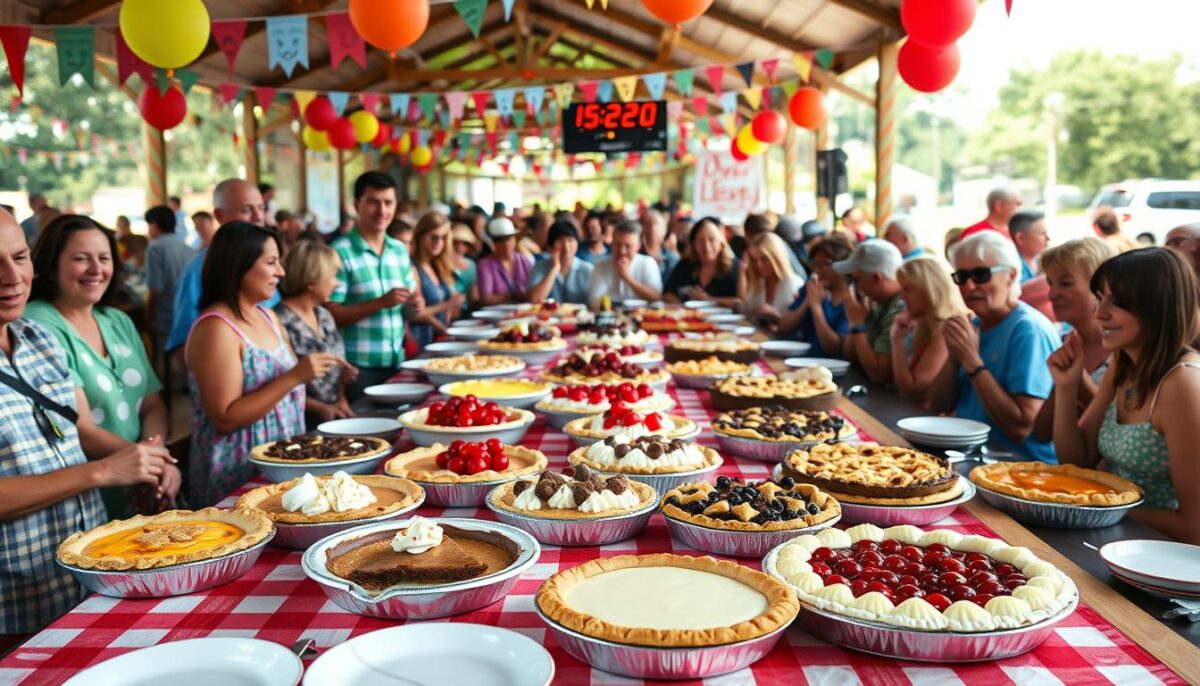
8. Mental Preparation and Psychology of Competitive Eating
Mental prep is key for pie eating contests. The mind plays a big part in winning. Contestants need to focus well to stay calm and sharp.
Building a strong mental game means managing stress and using visualization. These help eaters stay calm and focused. Seeing themselves win boosts confidence and mindset.
Competitive eaters use several focus techniques. These include:
- Deep breathing to calm down
- Positive self-talk to stay motivated
- Visualization to imagine success
| Technique | Description |
|---|---|
| Focus Techniques | Methods used to improve concentration and mental clarity |
| Stress Management | Strategies used to manage stress and anxiety |
| Visualization Exercises | Techniques used to imagine success and build confidence |
Mastering these techniques helps eaters perform well. They can succeed in pie eating contests.
9. Common Mistakes to Avoid in Pie Eating Competitions
Even the best competitive eaters can stumble in pie eating contests. To steer clear of common mistakes, it’s crucial to understand both the rules for pie eating and the common pitfalls that can derail your performance. Mistakes like poor technique, inadequate training, and losing focus often hold contestants back from their best.
To avoid pie eating errors, a combination of skill, strategy, and mental preparation is essential. Here are some major mistakes to steer clear of:
- Poor jaw alignment and biting technique
- Inadequate training and practice
- Lack of focus and mental preparation
- Insufficient hydration and nutrition
Understanding the rules for pie eating contests is just as important as recognizing these mistakes. Rules often dictate how pies are consumed, whether hands can be used, and even the time limits. Ignoring these details can lead to penalties or disqualification.
By knowing and following the rules for pie eating contests, alongside avoiding these common mistakes, you can set yourself up for success. Stay focused, train regularly, and prioritize your physical and mental well-being to excel in competitive eating.
Learning from your mistakes is crucial to improving your skills and avoiding common mistakes in pie eating contests. By analyzing your performance and identifying areas for improvement, you can develop a winning strategy and become a top competitor in pie eating competitions.
10. The Recipe
Print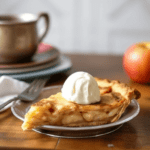
Apple Cinnamon Breakfast Pie
- Total Time: 50 minutes
- Yield: 6 slices
Description
The warm, comforting flavors of cinnamon and apples come together beautifully in this Apple Cinnamon Breakfast Pie. With its golden, flaky crust and sweet spiced filling, it’s a delightful way to start your day.
Perfect for family gatherings, brunches, or simply treating yourself to a cozy morning, this pie is as satisfying as it is delicious. Serve it with a dollop of whipped cream, a drizzle of honey, or even a scoop of vanilla yogurt for a complete breakfast experience.
Ingredients
– 1 pre-made pie crust (or homemade if preferred)
– 4 large apples (Granny Smith or Honeycrisp), peeled, cored, and thinly sliced
– 1/4 cup granulated sugar
– 1/4 cup brown sugar
– 2 tsp ground cinnamon
– 1/4 tsp ground nutmeg
– 1 tbsp lemon juice
– 2 tbsp all-purpose flour
– 1/2 tsp vanilla extract
– 1/4 cup rolled oats
– 2 tbsp cold butter, cubed
– 2 tbsp chopped walnuts or pecans (optional)
Instructions
1. Preheat your oven to 375°F (190°C) and grease a 9-inch pie dish.
2. Roll out the pie crust and place it into the dish. Trim the edges as needed.
3. In a large bowl, combine the sliced apples, granulated sugar, brown sugar, cinnamon, nutmeg, lemon juice, and flour. Toss well until apples are evenly coated.
4. Pour the apple mixture into the prepared pie crust, spreading it evenly.
5. In a separate bowl, mix oats, cold butter, and nuts (if using) until crumbly. Sprinkle this mixture over the apples.
6. Bake for 35-40 minutes or until the crust is golden brown and the apples are tender.
7. Let the pie cool for 10 minutes before slicing and serving.
- Prep Time: 15 minutes
- Cook Time: 35 minutes
FAQ
What are the standard time limits for competitive pie eating contests?
Pie eating contests usually last from 5 to 15 minutes. The exact time is set by the event organizers. Know the time limit to pace yourself and win.
What are the disqualification criteria for pie eating competitions?
Events can disqualify you for many reasons. This includes using banned techniques, being too messy, or going over time. Know the rules to avoid getting disqualified.
What are some professional techniques used by competitive pie eaters?
Pros use special methods to eat pie fast. They might dunk the pie in water or use certain body positions. These help them eat more.
What are the safety guidelines and health considerations for competitive pie eating?
Pie eating can be tough and risky. Make sure you’re healthy before competing. Events should have safety plans and medical checks.
After competing, recover well and stay hydrated. This keeps you safe and healthy.
What are some common mistakes to avoid in pie eating competitions?
Avoid bad techniques, poor training, and losing focus. Practice eating right and train well. Stay calm and focused to succeed.
Conclusion
As we conclude our journey through the delightful world of pie eating, it’s important to reflect on the joy this tradition brings. Whether you’re a competitive eater or simply someone who loves savoring pies, the pleasure of pie eating is universal and timeless.
Throughout this exploration, we’ve delved into the rules for pie eating, from proper etiquette to the techniques required for competitions. These rules not only enhance the experience but also preserve the spirit of this cherished activity. Beyond the structure, though, the real joy lies in the moment—tasting and embracing the tradition.
So, take the time to enjoy your favorite pies, whether it’s a classic apple, a rich chocolate cream, or a zesty lemon meringue. Let’s celebrate the rules for pie eating and the fun of competitive eating while savoring each bite. After all, it’s about more than just eating—it’s about creating lasting memories with every slice.

